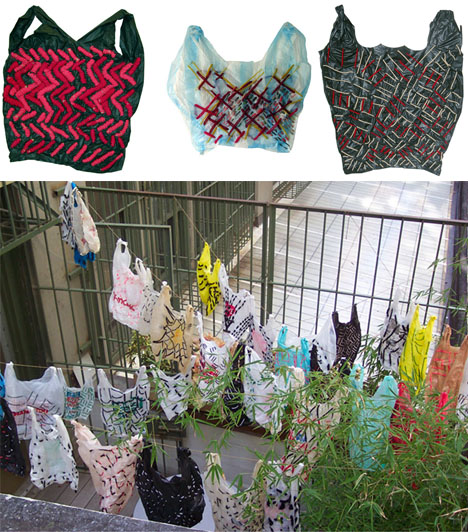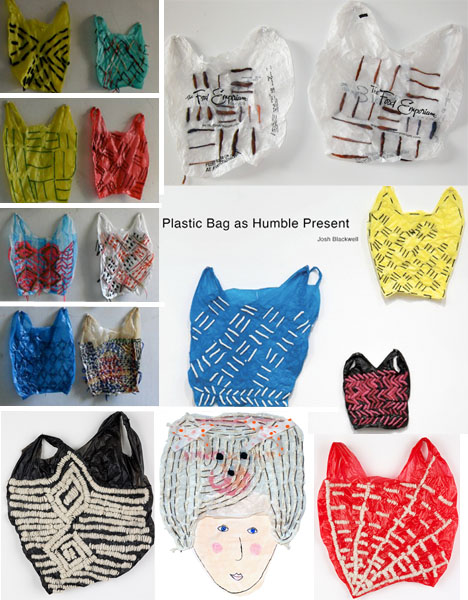Very few men earn their worldly fame due to unexpectedly wicked powers of embroidery (nor do they actually live to tell the tale), but fortunately, Josh Blackwell is a rare exception.
Sewing heavy-gauge thread onto cotton canvas isn’t what one might consider an artistic revelation, but stitching rainbow-infused patterns upon an ever-changing lineup of reclaimed plastic shopping bags? Well, that certainly compels one to sit up and take notice.

